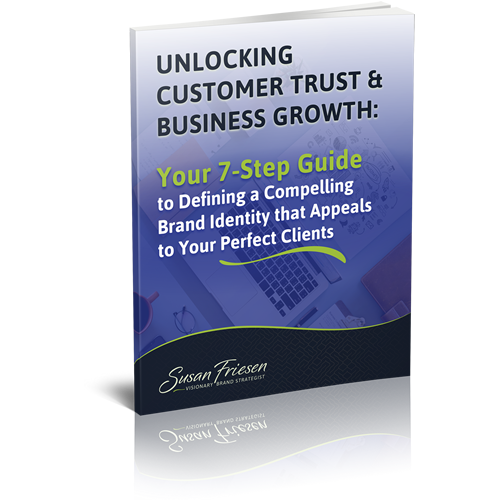In my previous articles, we have discussed the importance of choosing a strong brand, how to choose a strong brand, how to conduct a trademark search, the benefits of employing a trademark professional and the differences between the ™ and ® symbols and how to use these symbols correctly.
Now, it’s time to talk about the mechanics of collecting the key information that is required to file a trademark application. The Canadian Intellectual Property Office is a complete resource for learning about trademarks, trademark searching, filing a trademark application on-line and so much more.
When you arrive at the site, scroll down to the “Services and Information” Section and click on “Trademarks”. Here you will find all of the information that you will require to file a successful trademark application.
If this is your first time to the site, I recommend that you go to the “Learn Section” and read: A Guide to Trademarks. This guide provides answers to most general trademark questions in “Understanding trademarks – The basics” and “Filing a trademark application – Getting Started” explains the application process step by step.
The following is a checklist of information that should be collected before filing a Canadian trademark application:
- When you file a trademark application, it is important to decide who the Applicant is going to be. Ask yourself – who is going to be using the mark? Is the mark going to be used by:
- an individual ie. Mary Smith
- a sole proprietor ie. Mary Smith, doing business as, Smith Adventures
- a partnership ie. Smith Adventures, a partnership
- a corporation ie. Smith Adventures Inc.
- What address should you use?
- Home address
- Office address
If you work from home, it is appropriate to use your home address as the place of business for the trademark application.
If you have an office, use the office address as the place of business. If you move, it is important to make sure that you write to the Canadian Intellectual Property Office and let them know in order for correspondence to reach you.
- What type of a trademark are you filing for? There are two main types of trademarks that can be applied for:
- Word trademark
- Logo design
A word trademark is the most common type of trademark – it is a word or words shown in plain block letters, for example: INFUSE WORKS.
A word trademark affords you the broadest scope of protection. This type of trademark provides the most flexibility because it is not limited to any particular type font or logo design.
A word trademark application allows you the right to use the mark in any logo design form and you are not required to file a new trademark application, if and when, you update the type font, colour, logo design and/or icon.
The second type of mark is a logo design trademark. It can consist of a word or words in a particular type font, colour, graphic design and/or icon.
A logo design trademark is limited to the extent that if the logo design undergoes changes or is updated in the future, a new logo design trademark application should be filed to protect the new variation.
- Will the trademark be used on goods, services or both?
- Goods
- Services
- Goods and Services
At the time of filing your trademark application, you must provide a list of the goods that you are planning to produce/manufacture and/or describe the service(s) that you are planning to provide – in ordinary commercial terms.
Sometimes, this is not always easy because the Canadian Trademarks Office likes goods and services to be described in a certain way. In order to make this task easier, the Office has developed a Goods and Services Manual.
You should refer to this manual and search your particular goods/services prior to filing the application. This is one of the most important parts of filing a trademark application.
Over 35% of trademark applications experience difficulties during examination because the description of goods/services has not been defined correctly.
Remember you cannot add to your description of goods and services once your trademark application has been filed. Take the time to really think about all of the goods/services that you are going to use the trademark on in the future. You always can delete goods and services from the application down the road if you don’t use them.
- Will the trademark application be based on proposed use or use in Canada? When the application is filed, you must identify the filing basis.
- Proposed Use
- Use in Canada
Proposed use – means that you have not actually produced/manufactured/sold any products or provided a service at the time of filing the application; however, you intend to do so in the future.
Use in Canada – means that you have produced/manufactured/sold products on which the trademark was displayed at the time of sale or you provided a service that you issued an invoice/bill to a customer.
Determining the date of first use is critical to a successful application. Many applicants use the date of incorporation as the date of first use of the mark. This typically is incorrect because it takes several weeks/months to get a business up and running.
You may not produce/manufacture/sell a product or provide a service on the date that you incorporate your company. As a rule of thumb, always use the date that you first sold a product on which the trademark was displayed or provided a service to a customer and issued an invoice as the date of first use of the trademark.
There also are circumstances where you may have both a proposed use and a use claim in one application. For example, you manufacture and have sold olive oil for one year and you are expanding the product line to include balsamic vinegars, salt and spices.
The application would include a use claim for the olive oil dating back to the first time the product was sold in Canada, and the application would include a proposed use claim for the balsamic vinegars, salt and spices.
If you consider the five key points outlined in this article, chances are good that your application will be successful (assuming of course that you conducted your trademark searching and the mark is available!).
Any inquiries about any of the information contained in this article can be addressed to Sandra Wright at infuseworks@me.com.







